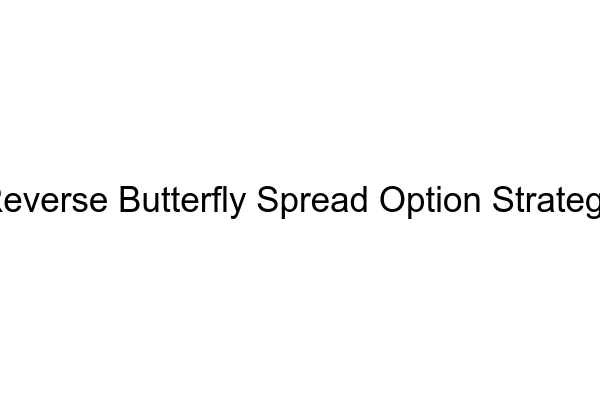Reverse Butterfly Spread Option Strategy

What are the characteristics of this option strategy?
The reverse butterfly spread is a type of options strategy that involves buying 1 call option, buying 2 more call options at a lower strike price, and selling 2 call options at a higher strike price. The reverse butterfly spread has a limited profit and risk, and is often used when making bets that the underlying security’s price will stay close to the current price.
Is this a bullish, bearish or neutral strategy?
The reverse butterfly spread is a neutral strategy, meaning that it is designed to make a profit as long as the underlying security’s price stays within a certain range. If the underlying security’s price moves outside of that range, the trades will result in a loss.
Is this a beginner or an advanced option strategy?
The reverse butterfly spread is a relatively simple, yet advanced option strategy. It is considered an advanced strategy because it involves buying and selling multiple options on the same underlying security.
In what situation will I use this strategy?
The reverse butterfly spread is typically used when the investor wants to make a bet that the underlying security’s price will stay close to the current price. It is a way to make money in a volatile market with limited risk.
Where does this strategy typically fall in the range of risk-reward and probability of profit?
The reverse butterfly spread has moderate risk and a moderate probability of profit. The amount of risk is limited because the investor only needs to worry about the two strike prices in the spread. The probability of profit is also moderate because the investor is betting that the price of the underlying security will stay near the current price.
How is this strategy affected by the greeks?
The greeks are metrics used to measure how an option’s price will react to changes in volatility, underlying security price, time to expiration and other factors. The reverse butterfly spread is affected by the greeks but not as much as other strategies. The greeks that have the biggest impact on this strategy are Delta, Gamma and theta. Delta measures how the option’s price will react to a change in the underlying security price, Gamma measures how faster the option’s price will react to changes in the underlying security price, and Theta measures how quickly the option’s price will erode as time passes.
In what volatility regime (i.e VIX level) would this strategy be optimal?
The reverse butterfly spread works best when volatility is low. This is because the profit potential is limited to the spread between the two strike prices. When volatility is low, the spread between the two strike prices is usually narrower, which results in a lower potential profit.
How do I adjust this strategy when the trade goes against me? And how easy or difficult is this strategy to adjust?
When the trade goes against the investor, they will need to roll up their position to a higher strike price. This is done by buying back the lower strike price options and selling new options at a higher strike price. This strategy is relatively easy to adjust and is done by adjusting the strike price of the options.
Where does this strategy typically fall in the range of commissions and fees?
The reverse butterfly spread typically falls in the mid-range of commissions and fees because it involves buying and selling multiple options. The commission and fees associated with a reverse butterfly spread depend on the broker and the type of options being used.
Is this a good option income strategy?
The reverse butterfly spread is not typically used as a source of income. It is a more speculative strategy and has a limited profit potential.
How do I know when to exit this strategy?
When using the reverse butterfly spread, the investor must pay attention to the underlying security’s price movements. If the underlying security’s price moves outside of the range between the two strike prices, they should exit the trade to avoid further losses.
How will market makers respond to this trade being opened?
Market makers typically respond to this trade by adjusting the options’ prices in order to make a profit. They will adjust the prices depending on their view of the underlying security’s future price movements.
What is an example (with calculations) of this strategy?
An example of a reverse butterfly spread is as follows: buying one call option with a strike price of $50, buying two more call options with a strike price of $45, and selling two call options with a strike price of $60. Assuming XYZ stock is currently trading at $50, the maximum risk for a reverse butterfly spread is $2,500 and the maximum reward is $1,750. The maximum profit is made when the price of the underlying stock is at $60 at expiration. The maximum loss is made when the price of the underlying stock is at $45 at expiration.
MarketXLS
MarketXLS is a tool that makes it easy to analyze the stock market. MarketXLS allows you to access real-time data, build custom charts and run technical analysis on stocks. The platform also includes powerful options analysis tools that can help you make more informed decisions about your investments. With MarketXLS, you can manage your investments in a smarter and more efficient way.
Here are some templates that you can use to create your own models
Reverse Iron Butterfly Spread
Reverse Iron Albatross Spread
Search for all Templates here: https://marketxls.com/templates/
Relevant blogs that you can read to learn more about the topic
Are Butterfly Spreads Right for You?
Reverse Iron Butterfly Options Strategy (Using MarketXLS Template)
